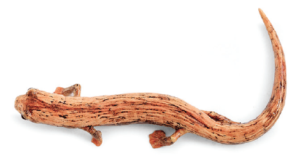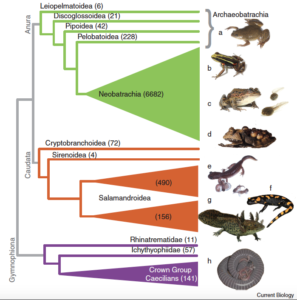
[Written November 2020, DBW] Note to prospective students and postdocs
While I have retired from active teaching and direction of graduate students, I am still active in several areas of research. In particular I continue to explore the phenomenon of biological size in salamanders, where genome and cell sizes vary widely, and study the implications in such phenomena as regeneration and morphogenesis and its manifestation in evolutionary morphology. I am also continuing to study the systematics and biogeography of tropical plethodontid salamanders and of species from western North America.
Research Program
My research has emphasizes analysis of evolutionary patterns and the processes that produce them. Several large projects laid the foundation for much research, some on-going. AmphibiaTree, a consortium of four universities including Berkeley, focused on production of a robust phylogenetic hypothesis for all species of amphibians using combinations of molecular, morphological and other data. HerpNET, which morphed into VertNet, a biodiversity informatics project to produce a fully geocoded distributed digital database of amphibians and reptiles in 398 museums. A web portal, AmphibiaWeb, was established by my lab with a local computer scientist and museum colleagues in 2000 and it provides ready access to available information for all species of the world.
The focus of most of my current research are the large and diverse salamander faunas of North America and the tropical forests of Central America, and ring species in western North America. Species formation is a topic of special interest, as well as adaptive radiation and its biological foundations. I also study the geography of amphibian declines and disappearances, and factors responsible for these phenomena. I also am studying various problems in evolutionary developmental biology, especially those related to genome size evolution in salamanders.
